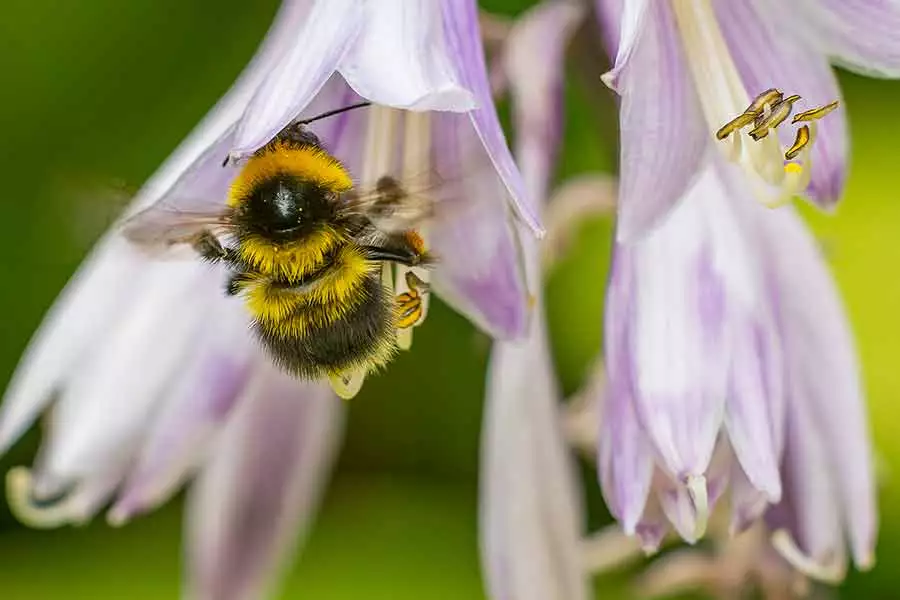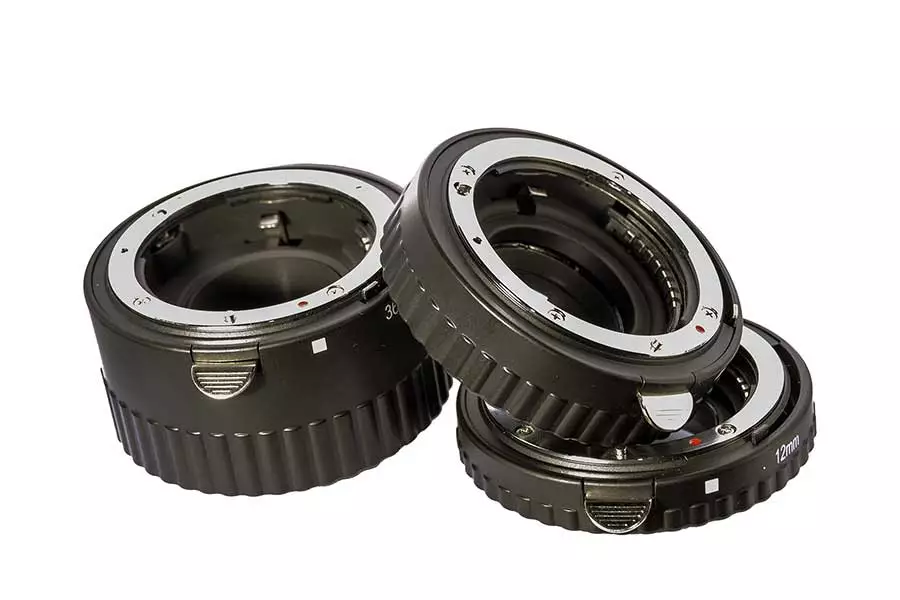DIY Video Studio is supported by its readers who use the affiliate links or ads on this site. As an Amazon Associate, I earn from qualifying purchases. Thank your support if you use any of the links.
A simple extension tube is an empty tube that fits between the camera and lens to increase the distance between the lens and sensor. This allows the lens to focus closer to the subject, increasing the magnification. Auto extension tubes include electrical contacts, allowing aperture control and autofocus.
By using a longer extension tube, you can increase the magnification of the lens and focus closer to the subject. This distance is known as the Minimum Focusing Distance (MFD), or the closest the lens can be to the subject and still focus on it. Using extension tubes also prevents infinity focus, so the maximum focusing distance also becomes an important consideration.
The rule of thumb is that the longer the extension tube, the smaller the minimum focusing distance, the greater the image magnification, and shorter maximum focusing distance.
Because simple extension tubes do not have any electrical contacts, the camera cannot communicate with the lens to control the aperture and autofocus. So, simple extension tubes are best used with manual focus lenses, which have manual focus and aperture control rings.
Modern digital lenses do not have an aperture ring, so they cannot be stopped down manually to reduce the depth of field. They should be used with automatic extension tubes that enable the camera to properly control the lens.
Now that we know what an extension tube is, we need to know more about how focal length and magnification are affected by adding an extension tube.
What can I use extension tubes for?
Extension tubes have been described as, the poor man’s macro kit, although I think that’s a little unfair.
The most popular use of extension tubes is to turn a standard lens into a makeshift macro lens. A proper macro lens will always be better than using extension tubes, since it will give you 1:1 magnification, or at least something that is close to that.


Because they have been designed to do a specific job, macro lenses are expensive. But most photographers only want to take macro shots occasionally, because macro is not their main interest. That’s where extension tubes come into their own. They are relatively cheap, many can work with your camera’s autofocus, and they can produce help you take decent macro images.
While macro photography is all about getting your lens close to your subject, extension tubes can also be used when you’re taking wildlife shots with a telephoto lens.
Wildlife and sports photographers crave “more reach” and may pay many thousands of dollars for a telephoto lens that can get them closer to the action.
If you watched any of the Tokyo Olympics you will have seen professional photographers with their long at the side of the competition area. Although they have long telephoto lenses they still want to be as close to the athletes as possible.
For most photographers the best super telephoto lenses are beyond their budget, but they can squeeze out some extra magnification from a cheaper telephoto lens by fitting inexpensive extension tubes. Although there is a cost in terms of lens performance.
Finally, extension tubes can be used as a handy way of carrying around other lens accessories. For instance, if you have a 1.4x and 2x teleconverter, it can be handy to keep them together by connecting them with an extension tube. In this case the extension tube functions as a protective spacer between the TCs.
Can You Stack Extension Tubes?
This is a common question, but there’s no shame in asking.
Extension tubes are often sold in twos or threes because they can be used individually or stacked together. The more extension tubes you stack together, the greater the effect, whether for macro photography with standard lenses, or to increase the magnification of a telephoto lens.
In my lens kit bag, I have two sets of JJC automatic extension tubes. Each set consists of an 11mm extension tube and a 16mm extension tube, which can be combined to make a third extension tube length of 27mm. Because I have two sets of these extension tubes, I can have several potential lengths, from 11mm to 54mm. However, I would not advice adding further extension tubes.
I tend to attach the extension tube to the lens and then attach the camera body to the extension tube. This is especially the case when using extension tubes on a telephoto lens.
What are the Disadvantages of Using Extension Tubes?
As they say, you don’t get anything for nothing. And that’s also true of extension tubes.
Although there are advantages to using extension tubes for both macro photography and increasing the apparent magnification of a telephoto lens, there are also some disadvantages. Some of these are more apparent with DSLR cameras than with mirrorless cameras.
The disadvantages include a loss of light, a shallower depth of field, a loss of infinity focus, possibly an inability to focus when using very short focal length lenses, and possible image quality degradation due to the lens being used in a way that it was not designed to be.
However, don’t be put off by this list of disadvantages. The pros do outweigh the cons and every photographer can make use of a good set of extension tubes.
Tosh Lubek runs an audio and video production business in the UK and has been using the Canon EOS R since it was released in the Autumn of 2018 and the Canon EOS R6 in 2020. He has used both cameras to shoot TV commercials broadcast on Sky TV, promotional business videos, videos of events and functions, and YouTube creator content. He has also won several international awards for his advertising and promotional work. You can meet him by visiting his “video booth” at HashTag Business Events across the country.
Recent Posts
You're Using the Canon RF 50mm f/1.8 WRONG! Here’s How to Fix It
If you’ve recently picked up the Canon RF 50mm f/1.8 STM—affectionately known as the Nifty Fifty—you might be confused by that strange switch on the side of the lens. It doesn’t say AF/MF...
Recently, I shot several customer testimonial videos in 4K for a client when the overheating warning on my Canon EOS R6 appeared. In fact, it appeared three times in five sessions during the day of...


